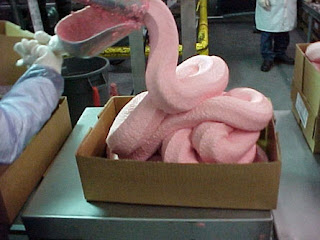 |
| http://headrush.typepad.com/photos/uncategorized/schoolboy_1.jpg |
There are many things I learn each day. One of the many things that have dawned on me since jumping headfirst, no... feet first, no... sideways describes it best, into inquiry based science is that students learn more when I talk less. When they are given the opportunity to work collaboratively on a problem, project, or inquiry it is their discourse and thinking that leads to new learning. My facilitating helps, but not from a pulpit at the front of the room. This is a hard switch to make. In order to feel control and know what is going on in every corner of the room, I have always felt that need to be in the front. As this shift has begun to happen, being anywhere in the room has been fine because when the trust has been put in the students' hands. They have been on task and learning. Probably, no, definitely more than if I was lecturing in the front of the room.
As the students have had opportunities to talk more in smaller groups, they have had more opportunities to think, and thus more opportunities to learn. Two thousand ten was a great year of learning for me. I hope 2011 is a year of less talking (by me), and more learning for my students!
Happy 2011!
Tim




